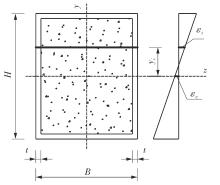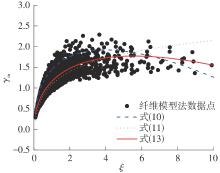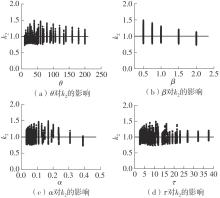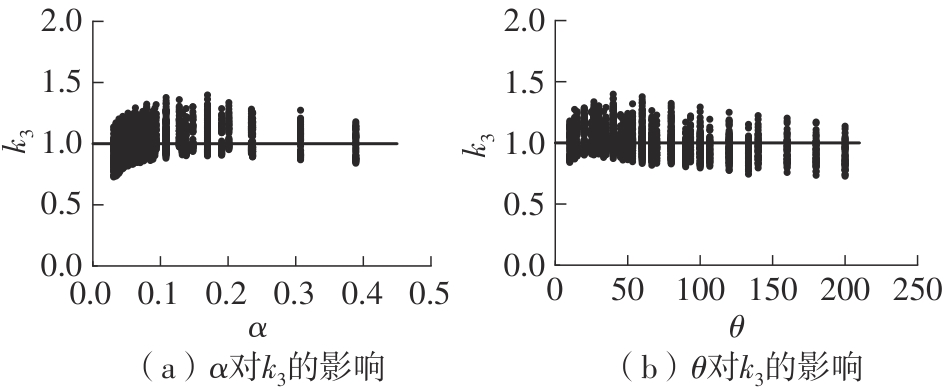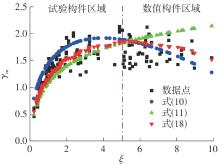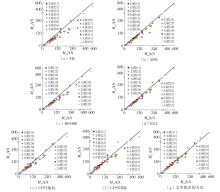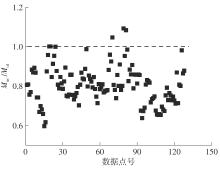| 1 |
钟善桐 .钢管混凝土统一理论——研究与应用[M].北京:清华大学出版社,2006.
|
| 2 |
陈宝春,韦建刚,周俊,等 .我国钢管混凝土拱桥应用现状与展望[J].土木工程学报,2017,50(6):50-61.
|
|
CHEN Baochun, WEI Jiangang, ZHOU Jun,et al .Application of concrete-filled steel tube arch bridges in China:current status and prospects[J].China Civil Engineering Journal,2017,50(6):50-61.
|
| 3 |
Specification for structural steel buildings:ANIS/AI [S].
|
| 4 |
Eurocode 4:design of composite steel and concrete structures:part 1-1:general rules and rules for buildings: [S].
|
| 5 |
Recommendations for design and construction of concrete filled steel tubular structures:AIJ [S].
|
| 6 |
Steel,concrete and composite bridges,part 5:code of practice for design of composite bridges: [S].
|
| 7 |
钟善桐 .钢管混凝土结构[M].3版.北京:清华大学出版社,2003.
|
| 8 |
解威威 .钢管混凝土结构极限承载力分析的高效高精度线弹性迭代方法[D].南宁:广西大学,2018.
|
| 9 |
钢管混凝土结构技术规范: [S].
|
| 10 |
钢管混凝土结构技术规程: [S].
|
| 11 |
HAN L H .Flexural behaviour of concrete-filled steel tubes[J].Journal of Constructional Steel Research,2004,60(2):313-337.
|
| 12 |
GHO W M, LIU D L .Flexural behaviour of high-strength rectangular concrete-filled steel hollow sections[J].Journal of Constructional Steel Research,2004,60(11):1681-1696.
|
| 13 |
LI G C, LIU D, YANG Z J,et al .Flexural behavior of high strength concrete filled high strength square steel tube[J].Journal of Constructional Steel Research,2017,128:732-744.
|
| 14 |
JAVED M F, SULONG N H R, MEMON S A,et al .FE modelling of the flexural behaviour of square and rectangular steel tubes filled with normal and high strength concrete[J].Thin-Walled Structures,2017,119:470-481.
|
| 15 |
杨有福,韩林海 .矩形钢管混凝土构件抗弯力学性能的试验研究[J].地震工程与工程振动,2001,21(3):41-48.
|
|
YANG You-fu, HAN Lin-hai .Experimental studies on behavior of concrete-filled RHS members subjected to pure bending[J].Earthquake Engineering and Engineering Vibration,2001,21(3):41-48.
|
| 16 |
唐广青,肖岩,张倚天 .方钢管混凝土轴压短柱承载力与全曲线综述研究[J].工程力学,2015,32(8):103-111.
|
|
TANG Guang-qing, XIAO Yan, ZHANG Yi-tian .Study of bearing capacity and complete stress-stain curves for concrete filled square steel tube columns[J].Engineering Mechanics,2015,32(8):103-111.
|
| 17 |
吴乃森,刘雪冬,赵艳艳,等 .方矩形钢管混凝土抗弯性能研究及规范对比[J].河北工程大学学报(自然科学版),2012,29(4):20-23.
|
|
WU Naisen, LIU Xuedong, ZHAO Yanyan,et al .Experimental investigation and code comparison on flexural bearing capacity of concrete-filled rectangular steel tubes[J].Journal of Hebei University of Engineering (Natural Science Edition),2012,29(4):20-23.
|
| 18 |
LIANG Q Q .Performance-based analysis of concrete-filled steel tubular beam-columns,part I:theory and algorithms[J].Journal of Constructional Steel Research,2009,65(2):363-372.
|
| 19 |
HAN L H, LU H, YAO G H,et al .Further study on the flexural behaviour of concrete-filled steel tubes[J].Journal of Constructional Steel Research,2006,62(6):554-565.
|
| 20 |
杨绿峰,解威威,戎艳,等 .矩形钢管混凝土受弯构件材料本构关系与失效判据研究[J].土木工程学报,2019,52(1):60-70.
|
|
YANG Lufeng, XIE Weiwei, RONG Yan,et al .Constitutive relations and failure criterion for rectangular concrete-filled steel tube members under pure bending[J].China Civil Engineering Journal,2019,52(1):60-70.
|
| 21 |
矩形钢管混凝土结构技术规程: [S].
|
| 22 |
TOMII M, SAKINO K .Elasto-plastic behaviour of concrete filled square steel tubular beam-columns[J].Transactions of the Architectural Institute of Japan,1979(280):111-120.
|
| 23 |
LU Y Q, KENNEDY D J L .The flexural behavior of concrete-filled hollow structural sections[J].Canadian Journal of Civil Engineering,1994,21(1):111-130.
|
| 24 |
李斌,闻洋 .矩形钢管混凝土梁受弯性能试验研究[J].建筑结构,2010,40(6):51-52,80.
|
|
LI Bin, WEN Yang .Study on mechanical properties of concrete-filled rectangular steel tube beams[J].Building Structure,2010,40(6):51-52,80.
|
| 25 |
郭兰慧,张素梅,王玉银 .方形、矩形钢管高强混凝土受弯构件的理论分析与试验研究[J].钢结构,2002,17(6):29-33.
|
|
GUO Lanhui, ZHANG Sumei, WANG Yuyin .Experimental research and theoretical analysis on flexural behavior of high-strength concrete-filled square and rectangular steel tubes[J].Steel Construction,2002,17(6):29-33.
|
| 26 |
UY B .Strength of concrete filled steel box columns incorporating local bucking[J].Journal of Structural Engineering,2000,126(3):341-352.
|
| 27 |
UY B .Strength of short concrete filled high strength steel box columns[J].Journal of Constructional Steel Research,2001,57(2):113-134.
|
| 28 |
SOUNDARARAJAN A, SHANMUGASUNDARAM K .Flexural behaviour of concrete-filled steel hollow sections beams[J].Journal of Civil Engineering & Management,2008,14(2):107-114.
|
| 29 |
XIONG M X, XIONG D X, LIEW J Y R .Flexural performance of concrete filled tubes with high tensile steel and ultra-high strength concrete[J].Journal of Constructional Steel Research,2017,132:191-202.
|
| 30 |
WANG W H, HAN L H, LI W,et al .Behavior of concrete-filled steel tubular stub columns and beams using dune sand as part of fine aggregate[J].Construction & Building Materials,2014,51(1):352-363.
|
| 31 |
AL-SHAAR A A M, GOGUS M T .Flexural behavior of lightweight concrete and self-compacting concrete-filled steel tube beams[J].Journal of Constructional Steel Research,2018,149:153-164.
|
| 32 |
JIANG A Y, CHEN J, JIN W L .Experimental investigation and design of thin-walled concrete-filled steel tubes subject to bending[J].Thin-Walled Structures,2013,63:44-50.
|
| 33 |
钢结构设计标准: [S].
|
| 34 |
混凝土结构设计规范: [S].
|
 ), XIE Weiwei2, YANG Lufeng1(
), XIE Weiwei2, YANG Lufeng1( )
)
